Volkswagen’s made its mark in the world of motorsport on virtually every surface, racking up numerous successes on asphalt, gravel, snow, ice and desert and what began in the mid-1960s with Formula Vee is now continuing into the future with the Polo R WRC…
Mindful of the fact that we’re gearing up for our 30th Birthday celebrations at the historic Brands Hatch race circuit on 7th July, to which you are all invited, we thought we’d cast an eye over some of the cars that helped make VW Motorsport such a success over the decades…

Despite the success of numerous ‘privateers’ driving hotted up Beetles, VW boss Heinrich Nordhoff made it company policy that there would be no official works sports activities. Thankfully, VW decided to reconsider its decision in 1975 once the legendary Golf GTI had broken cover. However, it was a diesel version of the car that interested Klaus Peter Rosorius at Hanover’s newly established Motorsport division…
Pierburg Golf
Enthused by the car’s sporty performance and habit of sipping fuel, in 1978 Jochi Kleint and Andreas Hänsch (above) entered a turbocharged Golf diesel in the Monte Carlo Rally that year. But that was just the start of it. In 1980, the 170bhp ‘Pierburg Golf’ based on a GTI model and crewed by none other than Per Eklund and Hans Sylvan clocked up fifth place in the rally, sealing early success for what was fundamentally the first official works rally vehicle.
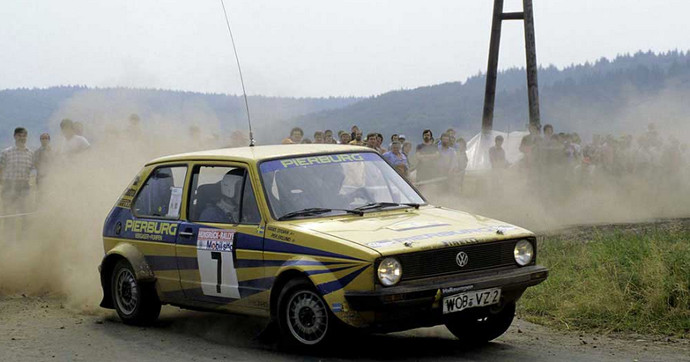
Race Iltis
Originally designed as an off-road vehicle for the German Army, legendary racing driver Freddy Graf Kottulinksy piloted an Iltis to victory in what would later be called the Dakar Rally in 1980. Three other Iltis entries finished second, fourth and ninth in the historic endurance event.
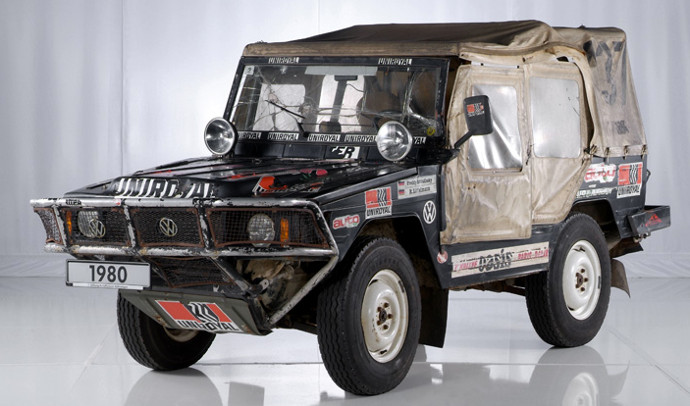
Having produced 8,800 examples, the rights were sold to Canadian manufacturer Bombardier which continued to build a slightly modified version right up until the late ‘80s. Interestingly, despite employing a Golf engine they used instrumentation from the 1303 Beetle and even borrowed the Beetle’s flat plastic steering wheel.
Rheila Golf
Despite campaigning tuned mass-produced vehicles in the German Rally Championships since 1977, Volkswagen Motorsport had its big breakthrough in 1981 when its green Rheila Golf, driven by Alfons Stock and Paul Schmuck (no, really) won the German Rally Championship title. The iconic green machine was actually one of the original yellow Pierburg Golfs rebodied following a certain incident when the car landed on top of a tree and was close to being scrapped. It was subsequently given an Oettinger four-valve head and made 197bhp, making it one of the most fearsome vehicles of its time.
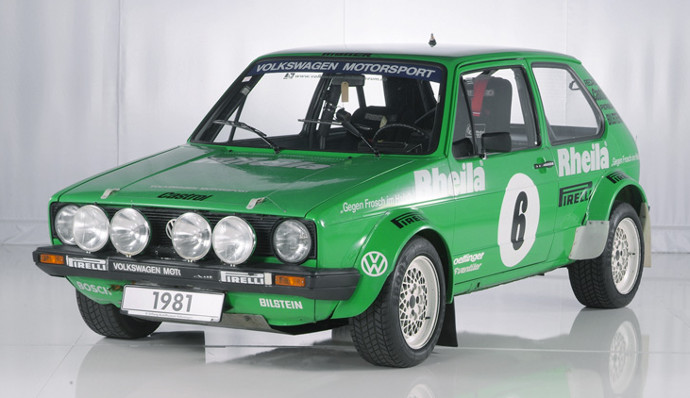
Golf Mk2
VW also saw success with its Mk2 Golf. In 1986, the factory entered 197bhp GTI took top honours in the newly established Group A World Rally Championship with Kenneth Eriksson and Peter Diekmann at the helm. The humble Mk2 was stripped out, given fibreglass wheelarch extensions and a battery of auxiliary headlights at the front.
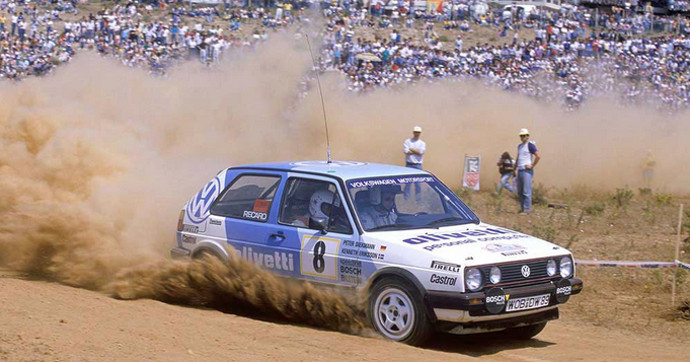
Its eventual palmares included three class wins, four second place and two third place finishes, all achieved against a backdrop of far more powerful four-wheel drive vehicles at the time. The car gained even more successes when treated to a breathed on version of the firm’s 16v engine which produced 215bhp.
Bi-Motor Pikes Peak Golf II
Build on similar lines to the Bi-Motor Scirocco, the 1985 Golf version was made specifically to take a stab at breaking the gruelling 9.4-mile long Pikes Peak Hill Climb record in Colorado. With successful GTI driver Jochi Kleint at the wheel and a 195bhp Oettinger tuned 1807cc engine at each end it was a formidable machine indeed with performance not dissimilar to that of the Scirocco. Namely 0-60 in just 4.3 seconds and a top speed of 162mph.
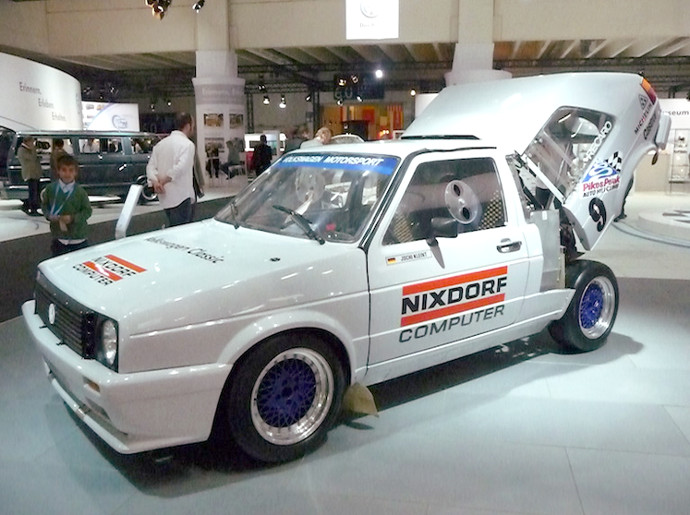
It didn’t prove a success and a subsequent attempt was made in 1986 using twin 1.3 Polo engines turbocharged to give 250bhp each which could do 0-60 in just 3.4 seconds and 193mph. Alas, they never won but at least they finished in the top 10…
Salzburg Beetle
We couldn’t end without mentioning the infamous black and silver ‘Salzburg Beetles’ which grappled their way to become rally icons in the early ‘70s. Based on the 1302 and 1303, they featured modified cams, oversized pistons, bigger valves and carbs borrowed from the Porsche 912 and later from the hairy 904. The story dates from 1965 when Porsche Austria developed an in-house motorsport division. Between 1971-74, 11 Salzburg Beetles took part in various rallysport activities, resulting in 15 overall wins, including the Austrian championships in 1971 and 1972.
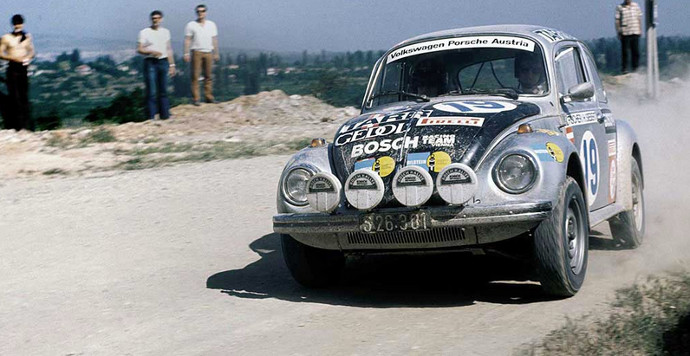
Ian
The opinions expressed here are the personal opinions of the author and do not necessarily represent the views and opinions of VW Heritage


Although successful in many different levels of motorsport you can’t help but think what if. The golf mk2 was a similar size and shape as the Lancia Delta and design’d by the same guy, and yet VW did not try to realise the full potential of of its hot hatch.
After the demise of group B where VAG had been so successful with the Quattro, a natural line would have (in my opinion) to be developing the capable hatch back in to a fire breathing tarmac shredder and go toe to toe with the Intergrale.
Toyota, Mitsubishi and Mazda all tried with minor success but I feel that VW shred away from the fight. Obviously it developed the rallye towards the end of the mk2’s production, but it seemed a little late.
Since the Integrale has gone on to a legendary status while the rallye is more of an oddity due to it limited production run.
Having owed both I can say without any doubt, the VolksWagen product is a much better built and thought out vehicle but the Italian has so much more to give.
Hola como puedo saber cuál es el color original de un Volkswagen beetle 1972 por el Pin Numbers 1132392706. Muchas gracias. Se comienza una etapa de restauración al auto.